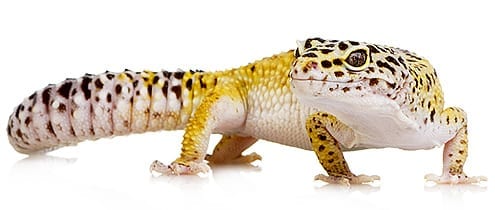Skin Shedding Problems Information Guide
One of the commonest problems customers coming into Coast to Coast Exotics encounter is skin shedding problems for reptiles. It’s a relatively straight forward process for reptiles; they have out grown out of their skin and shed it for many millions of years! However, there are certain conditions that nature provides them to do the job easily – and we must replicate that when keeping them in vivaria.
Provide A Damp, Enclosed Area
Leopard geckos and Corn snakes are two of the main culprits. Both species originate from either very dry or relatively dry terrain in the wild. This must be replicated in the vivarium, if you were to keep these species in damp conditions they would quickly display health problems. However, in the wild, these species hide most of the day coming out to forage for food during the evenings, meaning they spend a large proportion of their day hidden in an area that is naturally cool and slightly damp. For this reason, it’s vital to provide a very localised enclosed area of damp conditions. Nowadays this is easily supplied by placing one of the purpose designed caves / shelters in their vivarium. The Exo Terra Gecko Cave and Zoo Med Repti Shelter are perfect examples. Unlike normal hides they are totally enclosed, with no way of the moisture coming out to the rest of the vivarium. There are two main variations on the designs – if you want a moist hide for a gecko use the ones that have the holes in the side, for a snake use the ones with the entrance hole on the top.
A Moisture Retentive Substrate
It’s important to use a moisture retentive substrate in the bottom of the moist hide, many people use coir, orchid bark and sphagnum moss. Its worth noting that we do not recommend using sphagnum moss for Leopard geckos, they are not very bright and some individuals decide to eat it. The substrate must be kept wet at all times, not damp, but wet. For Leopard geckos our favourite choice is orchid bark as its very rough and helps with the skin shedding process – especially on the commonest problem areas the feet and toes. If the skin is allowed to build up the gecko will lose the toes due to blood flow restriction.
Other commonly seen problem areas for Leopard geckos are the eyes, skin build up here can lead to the eyes eventually closing and becoming infected. For snakes, the skin can come off in pieces (instead of a correctly shed whole piece) or they can retain an eye cap / spectacle (this is the skin that covers the eyes, snakes don’t have eyelids) – also check with young snakes especially that the tail tip sheds off. This, if the skin is allowed to build up, can result in restricted blood to the end of the tail and again loss of the tail.

Can It Be Really That Simple?
It really can be that simple, with the provision of a moist area within the vivarium many skin shedding problems can be avoided. If these kinds of problems rear their head there are several ways of dealing with it. With Leopard geckos it really is a case of patience. To release the skin it must be very damp and well soaked, perhaps keeping the gecko in a ventilated Tupperware tub or similar with a couple of mm of water for an hour or two will soak the skin sufficiently on the toes and feet. Use a cotton bud to gently release the skin, with time and patience it should come off. The eyes can be bathed with a damp cotton bud. If at all unsure, or should the toes bleed please visit your vet for further help and advice. Corn snakes are generally easier to deal with should they experience skin shedding problems. Most keepers advise placing the snake in a damp pillowcase – the combination of damp and constant moving against the material allows the snake to shed its own skin. Always check the head skins to make sure the eye caps are present, if not they are likely to be retained on the snake’s eyes. This can lead to subsequent sheds also leaving the eye caps, and eventually infections. If the eye caps are retained they can be gently removed by an experienced person, however it’s recommended that you visit your local vet. It’s worth noting that during all of the skin removing techniques keep the animal at its optimum temperature, the water can quickly chill.
There are some “over the counter “remedies such as Zoo Meds Shed Aid and Beapher Skin and Eye Ointment.
